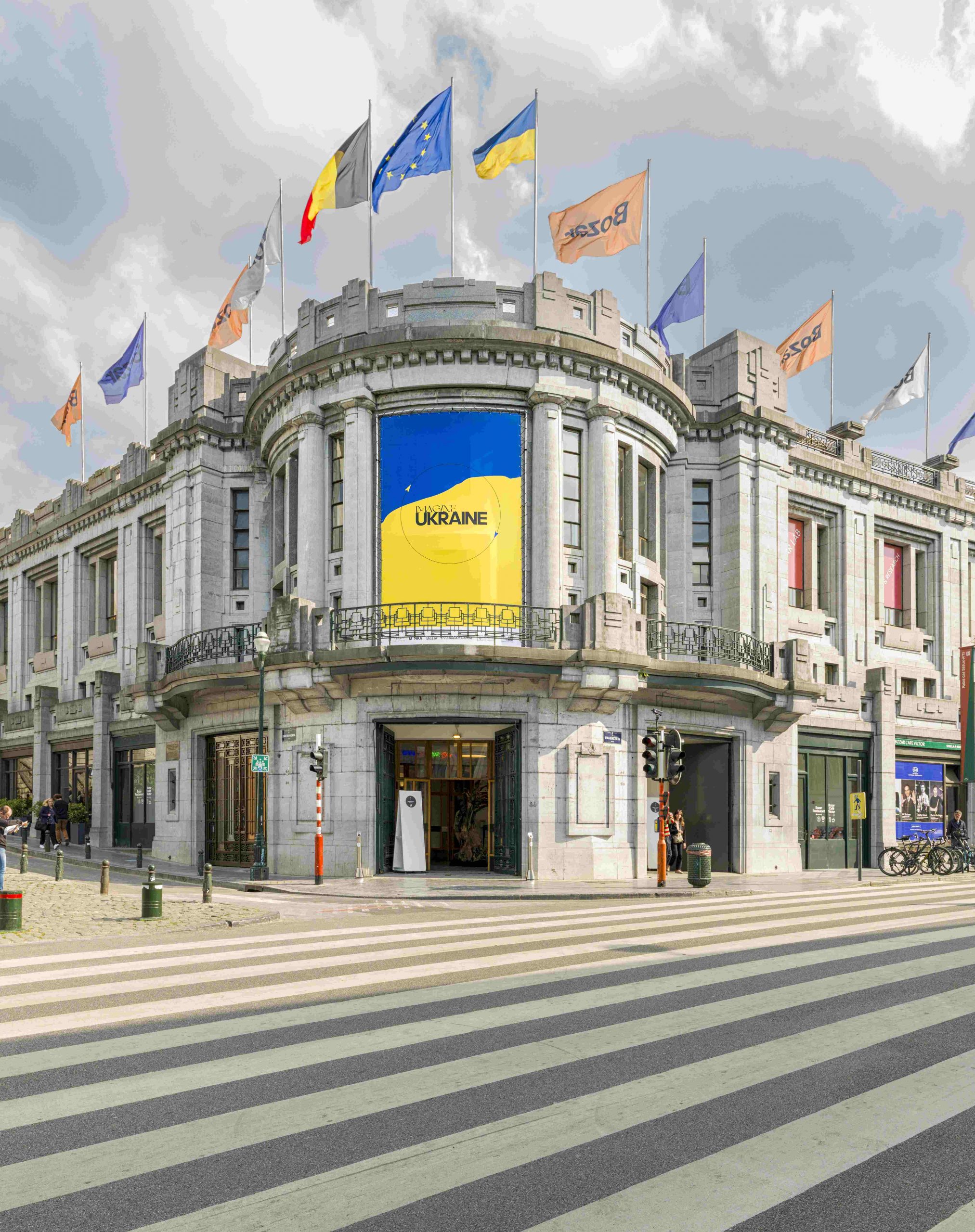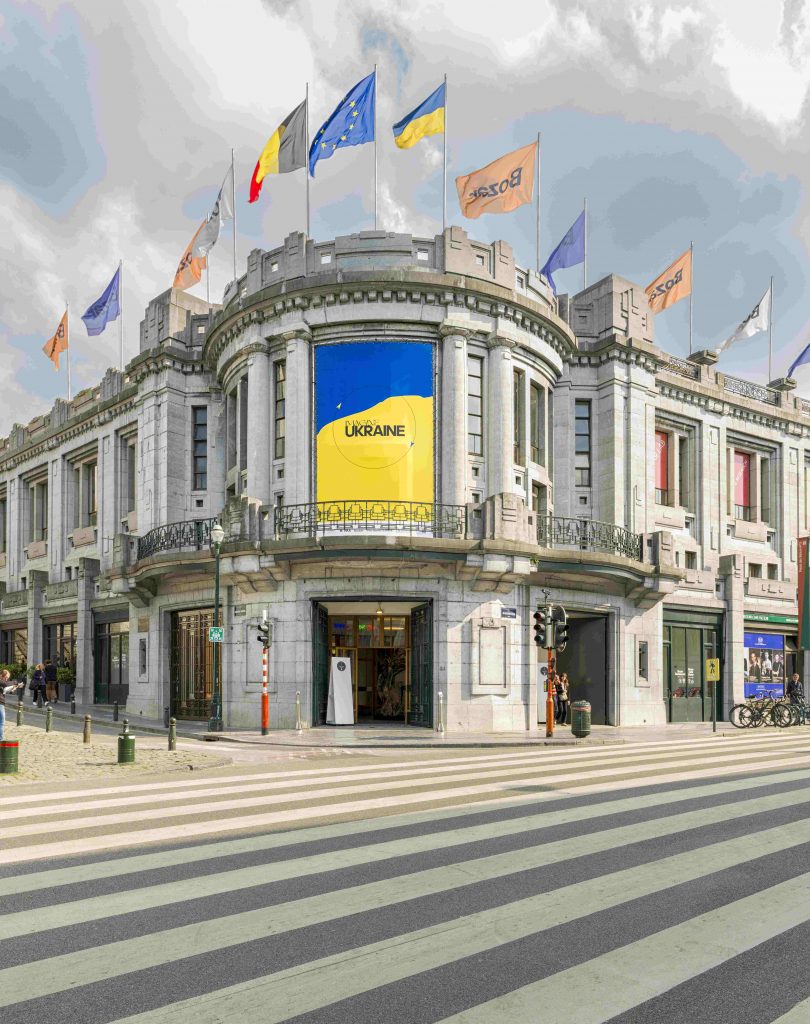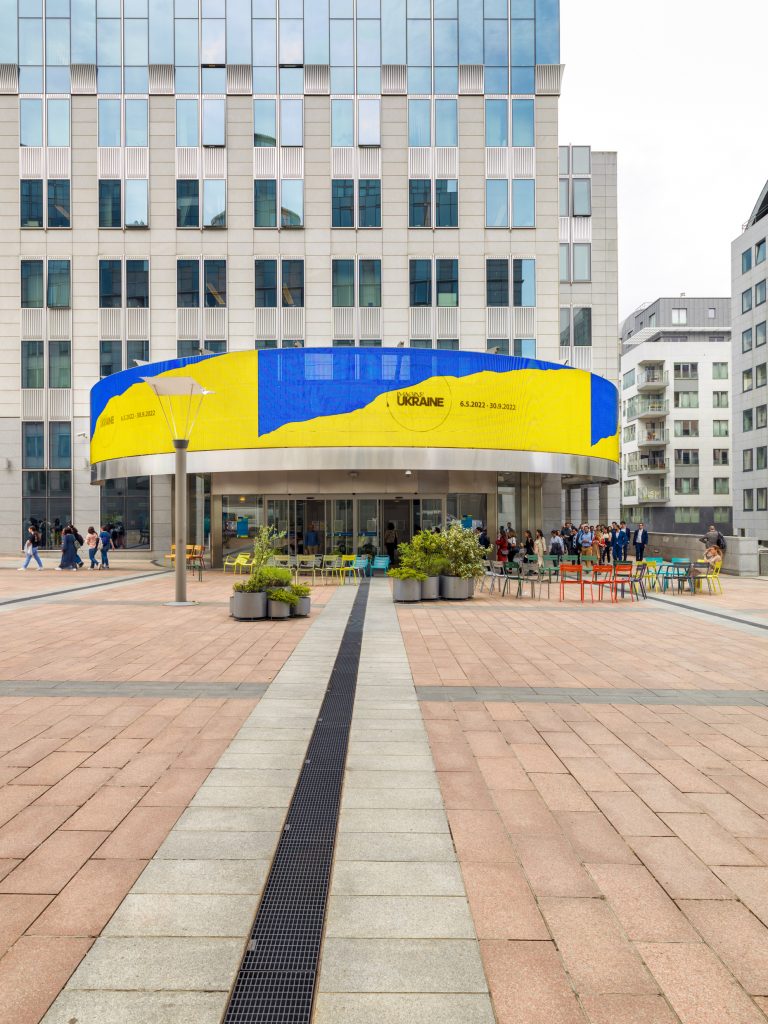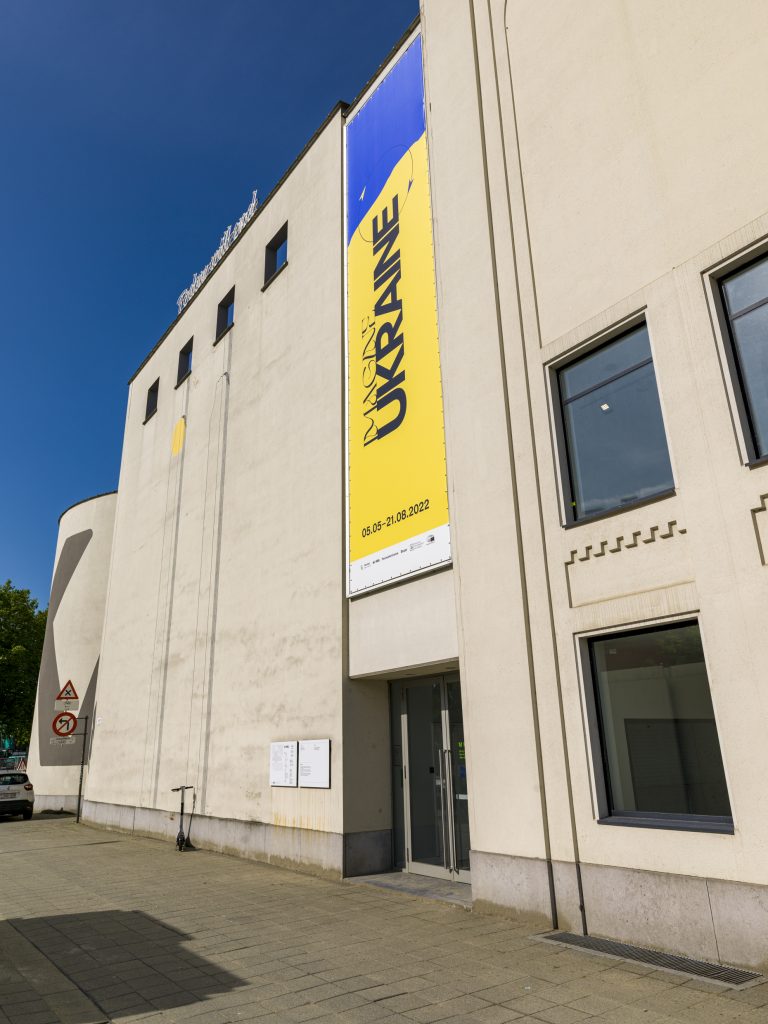Nikita Kadan, “Imagine Ukraine”
Imagine Ukraine is an ambitious project that aims to reach out beyond the immediate urgencies, however pressing those continue to be. It wants to open up to the larger reflection and longer term perspective that are needed for the future. Europe needs an enhanced focus on Ukraine, its concreteness and complexity, its possibilities and flight lines. Our joint understanding needs to grow.
To start with it consists of three exhibitions, curated by Bart De Baere and Björn Geldof, based upon the works of Ukrainian artists in the collection of the Flemish Community, presented at Bozar, the European Parliament and M HKA.
These are the starting points to initiate a reflective space about the past, present and future of the Ukrainian part of Europe. In the European Parliament the perspective will be the artist as a witness, in BOZAR the tension between big narratives and the reality of human lives, in M HKA art as a critical capacity.
With the painting “The Beautiful Coloniser”, Kadan raises questions on whether, within the history of Ukraine, one can see the Soviet period as colonialist, and on how relevant it is to look at the post-Soviet era of Ukraine through a post-colonial lens. He not only reflects on his own struggling with culture, descent and patriotism, but above all on how the post-revolutionary reinterpretation of the Soviet past and the manipulation of historiography affects the collective memory of Ukraine. He wants to expose the legacy of the Soviet Union and examine its impact on recent developments in Ukraine.
Kadan often quotes books on Ukrainian social life, on past and present political propaganda and on art history. The Beautiful Coloniser is based on a picture of a 17th century statue from Benin found in a Soviet book on African art. As might be expected, the book was written from an anti-colonial perspective. The depicted coloniser is an iconic figure with long hair and beard. Kadan turns him into a communist by painting a communist star on the helmet. The helmet recalls some helmets of the Red Army and at the same time looks like an Orthodox church dome. Such contradictions are characteristic of Kadan’s oeuvre, which oscillates between past and present, official state art and avant-garde, nationalism and internationalism.





